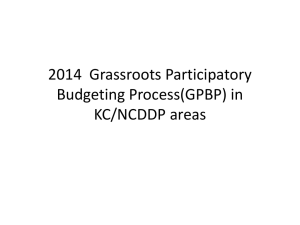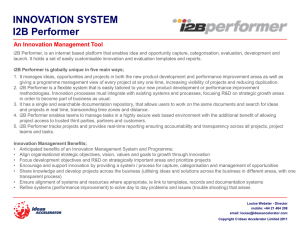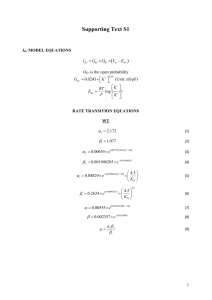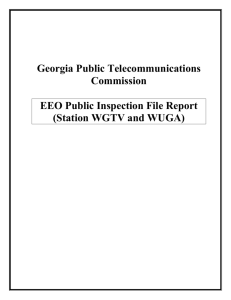Glycerol phenlybutyrate treatment in children with urea cycle disorders
advertisement
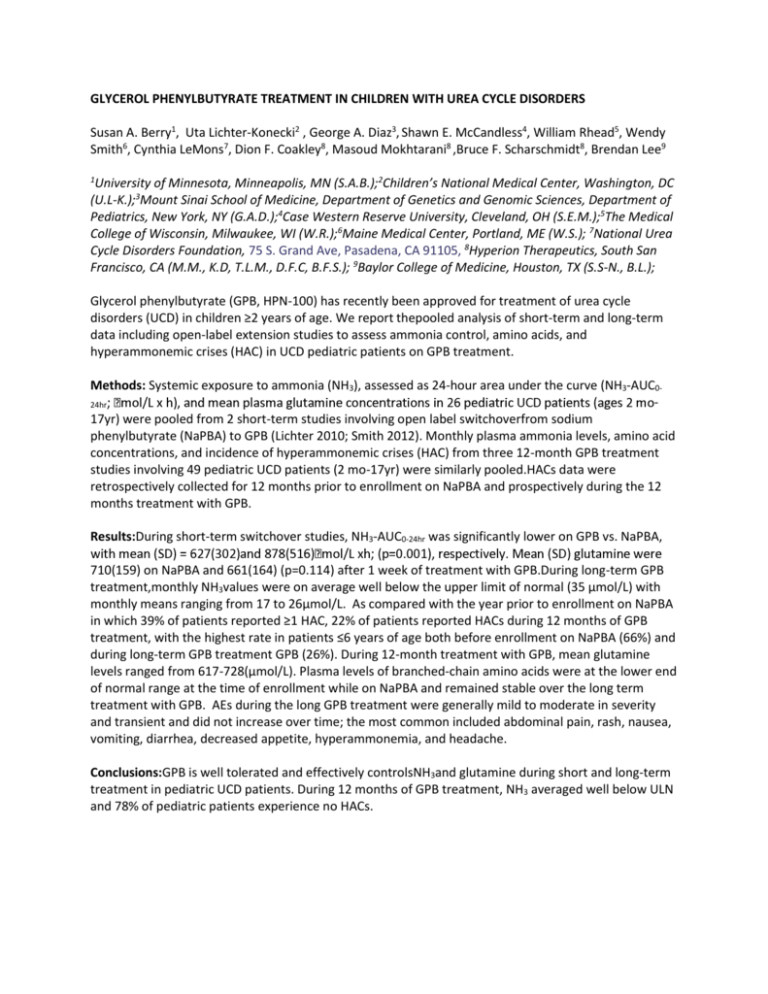
GLYCEROL PHENYLBUTYRATE TREATMENT IN CHILDREN WITH UREA CYCLE DISORDERS Susan A. Berry1, Uta Lichter-Konecki2 , George A. Diaz3, Shawn E. McCandless4, William Rhead5, Wendy Smith6, Cynthia LeMons7, Dion F. Coakley8, Masoud Mokhtarani8 ,Bruce F. Scharschmidt8, Brendan Lee9 1 University of Minnesota, Minneapolis, MN (S.A.B.);2Children’s National Medical Center, Washington, DC (U.L-K.);3Mount Sinai School of Medicine, Department of Genetics and Genomic Sciences, Department of Pediatrics, New York, NY (G.A.D.);4Case Western Reserve University, Cleveland, OH (S.E.M.);5The Medical College of Wisconsin, Milwaukee, WI (W.R.);6Maine Medical Center, Portland, ME (W.S.); 7National Urea Cycle Disorders Foundation, 75 S. Grand Ave, Pasadena, CA 91105, 8Hyperion Therapeutics, South San Francisco, CA (M.M., K.D, T.L.M., D.F.C, B.F.S.); 9Baylor College of Medicine, Houston, TX (S.S-N., B.L.); Glycerol phenylbutyrate (GPB, HPN-100) has recently been approved for treatment of urea cycle disorders (UCD) in children ≥2 years of age. We report thepooled analysis of short-term and long-term data including open-label extension studies to assess ammonia control, amino acids, and hyperammonemic crises (HAC) in UCD pediatric patients on GPB treatment. Methods: Systemic exposure to ammonia (NH3), assessed as 24-hour area under the curve (NH3-AUC024hr 17yr) were pooled from 2 short-term studies involving open label switchoverfrom sodium phenylbutyrate (NaPBA) to GPB (Lichter 2010; Smith 2012). Monthly plasma ammonia levels, amino acid concentrations, and incidence of hyperammonemic crises (HAC) from three 12-month GPB treatment studies involving 49 pediatric UCD patients (2 mo-17yr) were similarly pooled.HACs data were retrospectively collected for 12 months prior to enrollment on NaPBA and prospectively during the 12 months treatment with GPB. Results:During short-term switchover studies, NH3-AUC0-24hr was significantly lower on GPB vs. NaPBA, 710(159) on NaPBA and 661(164) (p=0.114) after 1 week of treatment with GPB.During long-term GPB treatment,monthly NH3values were on average well below the upper limit of normal (35 µmol/L) with monthly means ranging from 17 to 26μmol/L. As compared with the year prior to enrollment on NaPBA in which 39% of patients reported ≥1 HAC, 22% of patients reported HACs during 12 months of GPB treatment, with the highest rate in patients ≤6 years of age both before enrollment on NaPBA (66%) and during long-term GPB treatment GPB (26%). During 12-month treatment with GPB, mean glutamine levels ranged from 617-728(µmol/L). Plasma levels of branched-chain amino acids were at the lower end of normal range at the time of enrollment while on NaPBA and remained stable over the long term treatment with GPB. AEs during the long GPB treatment were generally mild to moderate in severity and transient and did not increase over time; the most common included abdominal pain, rash, nausea, vomiting, diarrhea, decreased appetite, hyperammonemia, and headache. Conclusions:GPB is well tolerated and effectively controlsNH3and glutamine during short and long-term treatment in pediatric UCD patients. During 12 months of GPB treatment, NH3 averaged well below ULN and 78% of pediatric patients experience no HACs.

